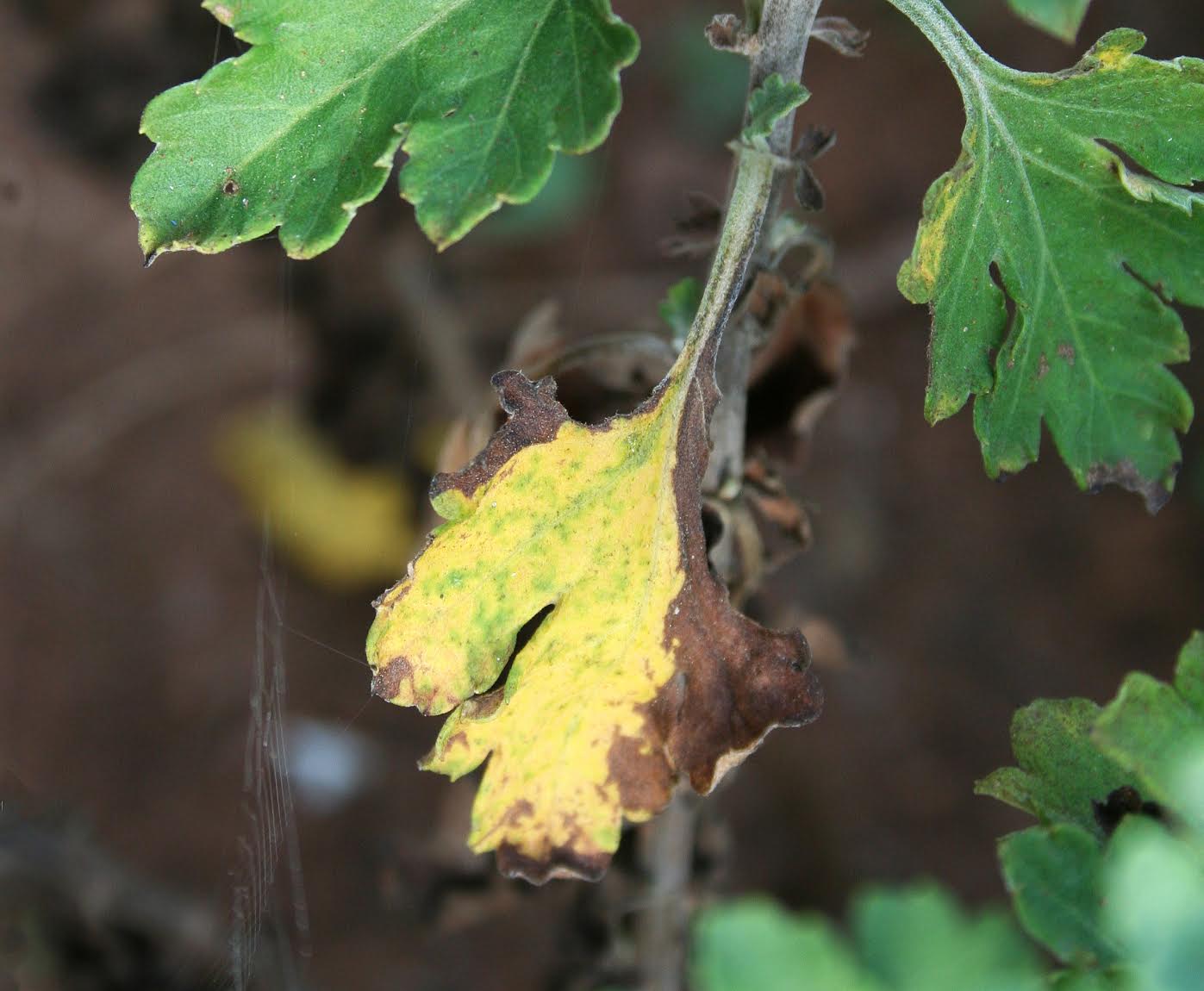Treating Yellow Leaves On Chrysanthemum: Reasons For Yellow Chrysanthemum Leaves


Chrysanthemums are some of a gardener’s best friends, demanding only full sun, well-drained soil, and regular irrigation to thrive. Also called hardy garden mums, these popular bedding flowers are generally trouble free. If you see your chrysanthemum leaves turning yellow, you’ll have to figure out what is going wrong. Read on for information about problems with chrysanthemum plants.
Yellowing Chrysanthemum Leaves – Poor Drainage
If you see yellowing chrysanthemum leaves on your plants, take a look at your soil. Garden mums that are planted in heavy soil or soil that drains poorly are not happy plants. The plants need well-draining soil to thrive. If the soil doesn’t release water, the mum’s roots drown, and you see your chrysanthemum plant yellowing. Your best bet in this case is to move the plants to a site with lighter soil. Alternatively, you can improve the soil by blending in sand or peat moss to make it better able to drain off water.
Chrysanthemum Plant Yellowing – Aphids
Pear-shaped sucking insects, aphids, are no larger than the head of a pin, but an aphid rarely travels alone. These insects often get together in large numbers on stem tips and buds of garden mums. If you see chrysanthemum plants turning yellow, check whether these “plant lice” are present. Fortunately, you can eliminate aphid-caused problems with chrysanthemum plants by pinching off the infested and yellow leaves on chrysanthemums and throwing them away in a plastic bag in the trash. You can also spray the bugs with an insecticidal soap product according to the label directions.
More Serious Problems with Chrysanthemum Plants
Yellowing chrysanthemum leaves can also indicate a more serious problem with your chrysanthemum plants. These include fusarium wilt and chlorotic mottle. Fusarium wilt on chrysanthemums often wilts or yellows the plant tissues, and no treatment exists that cures an infected plant. You can protect healthy plants to some extent by spraying them with a fungicide, but infected plants must be destroyed. Similarly, there is no treatment for chlorotic mottle. All you can do is destroy any infected plants with yellow leaves. You’ll also want to disinfect any garden tools you use on the plants and be sure not to touch healthy chrysanthemums after handling infected plants.
Gardening tips, videos, info and more delivered right to your inbox!
Sign up for the Gardening Know How newsletter today and receive a free copy of our e-book "How to Grow Delicious Tomatoes".

Teo Spengler is a master gardener and a docent at the San Francisco Botanical Garden, where she hosts public tours. She has studied horticulture and written about nature, trees, plants, and gardening for more than two decades. Her extended family includes some 30 houseplants and hundreds of outdoor plants, including 250 trees, which are her main passion. Spengler currently splits her life between San Francisco and the French Basque Country, though she was raised in Alaska, giving her experience of gardening in a range of climates.
-
 Looking For Plants To Give You The Soft And Fuzzies? Try These 5 Fuzzy Leaf Plant Options
Looking For Plants To Give You The Soft And Fuzzies? Try These 5 Fuzzy Leaf Plant OptionsLovers of texture, drama, silver foliage and tactile plants will adore these special sensory garden additions. These fuzzy leaf plant options will leave you all aglow
By Susan Albert
-
 Get Ready For A Summer Of Hummers! Grow These Full Sun Hummingbird Plants and Flowers
Get Ready For A Summer Of Hummers! Grow These Full Sun Hummingbird Plants and FlowersIf you’re lucky enough to enjoy a sunny backyard, make sure you are maxing out on your pollinator opportunities and grow these full sun hummingbird plants and flowers
By Tonya Barnett